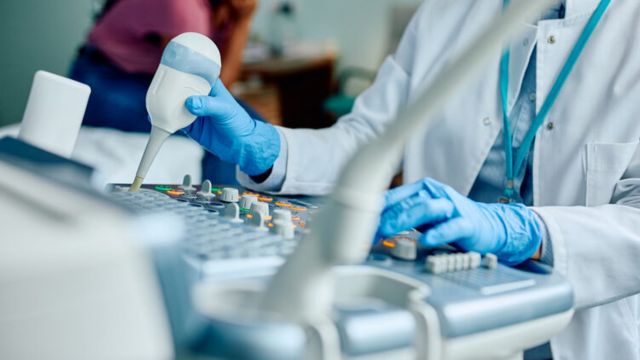Essential to the healthcare ecosystem, clinical engineers make sure that medical equipment runs effectively and safely to support good patient care. Professionals in this industry do, however, have many difficulties that could complicate their roles and affect hospital operations. Some of the main difficulties clinical engineers face will be covered in this article together with useful techniques to go beyond them.
1. Keeping Up with Rapid Technological Advancements
Challenge:
Medical technology is advancing at an unprecedented pace, with new diagnostic tools, robotic surgical devices, AI-driven systems, and frequent software updates emerging regularly. This rapid evolution makes it difficult for clinical engineers to stay current and fully understand the technologies they support.
How to Overcome:
-
Continuous Professional Development: Engage in ongoing training, certification courses, seminars, and workshops to keep skills and knowledge up to date.
-
Foster a Learning Culture: Encourage healthcare organizations to promote research, experimentation, and innovation when adopting new technologies.
-
Vendor Collaboration: Work closely with manufacturers to receive comprehensive training on new devices and stay informed about updates.
2. Managing Equipment Maintenance and Minimizing Downtime

Challenge:
Medical equipment downtime can disrupt patient care and hospital workflows. Clinical engineers must balance timely maintenance with minimizing equipment unavailability.
How to Overcome:
-
Preventive Maintenance Programs: Schedule regular maintenance to identify and fix potential issues before they lead to failure.
-
Predictive Maintenance: Utilize IoT sensors and data analytics to predict equipment failures and intervene proactively.
-
Rapid Response Teams: Have dedicated teams available for urgent repairs to reduce downtime.
-
Asset Management Software: Use digital tools to track equipment status and manage maintenance schedules efficiently.
3. Ensuring Regulatory Compliance and Safety
Challenge:
Healthcare facilities must comply with stringent regulations and safety standards to protect patients. Navigating these complex requirements demands diligence and up-to-date knowledge.
How to Overcome:
-
Regular Training on Regulations: Stay informed about updates from bodies such as the FDA, CE marking authorities, and ISO standards.
-
Comprehensive Documentation: Maintain detailed records of maintenance, calibration, and repairs to support audits and compliance.
-
Internal Audits: Conduct regular internal reviews to identify and address compliance gaps.
-
Quality Management Systems (QMS): Implement QMS to continuously monitor safety and quality standards.
4. Working Within Budget Constraints and Resource Limitations
Challenge:
Many healthcare organizations operate under limited budgets, which restricts their ability to purchase new equipment, upgrade existing devices, or hire sufficient staff.
How to Overcome:
-
Cost-Benefit Analysis: Prioritize investments in equipment that have the greatest clinical impact and return on investment.
-
Optimize Asset Utilization: Extend the lifespan of existing devices through refurbishment and proper maintenance.
-
Explore Funding Opportunities: Seek grants, leasing options, and government funding to supplement budgets.
-
Multidisciplinary Procurement: Include clinical, engineering, and financial teams in purchasing decisions to ensure value-driven investments.
-
Enhance Staff Efficiency: Train existing staff to maximize productivity and reduce the need for additional hires.
5. Integrating Medical Devices with Hospital IT Systems
Challenge:
Modern medical devices often need to communicate seamlessly with hospital IT systems like electronic health records (EHR) and clinical databases, which can be complex and prone to compatibility issues.
How to Overcome:
-
Interdepartmental Collaboration: Clinical engineering should work closely with IT and clinical teams during device selection and integration.
-
Adopt Interoperability Standards: Use standards such as HL7 and DICOM to ensure devices can communicate effectively.
-
Continuous Monitoring: Regularly test integrated systems to maintain data integrity and performance.
-
Implement Cybersecurity Measures: Protect patient data and device networks from cyber threats through robust security protocols.
6. Addressing Human Resource Challenges and Staff Training
Challenge:
Clinical engineering is a specialized field with a shortage of skilled professionals. High staff turnover and inadequate training can affect service quality.
How to Overcome:
-
Career Development Plans: Offer clear paths for professional growth, certifications, and skill enhancement.
-
Mentorship Programs: Pair junior engineers with experienced mentors for knowledge transfer and support.
-
Regular Training: Organize ongoing training sessions, especially when new devices or software are introduced.
-
Retention Strategies: Foster a positive work environment to encourage long-term staff retention.
Conclusion
From maintaining pace with fast technology progress to managing limited resources and complicated regulatory requirements, clinical engineers deal with a wide range of issues. These obstacles can be effectively addressed, though, with proactive approaches like constant education, predictive maintenance, rigorous compliance standards, cooperative IT integration, and targeted human resource development.
Effective resolution of these problems by clinical engineers helps to greatly increase patient safety, improve healthcare results, and streamline hospital operations. Thriving in an always changing healthcare environment depends on experts in this sector being flexible and dedicated to lifelong learning.








